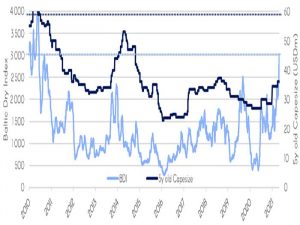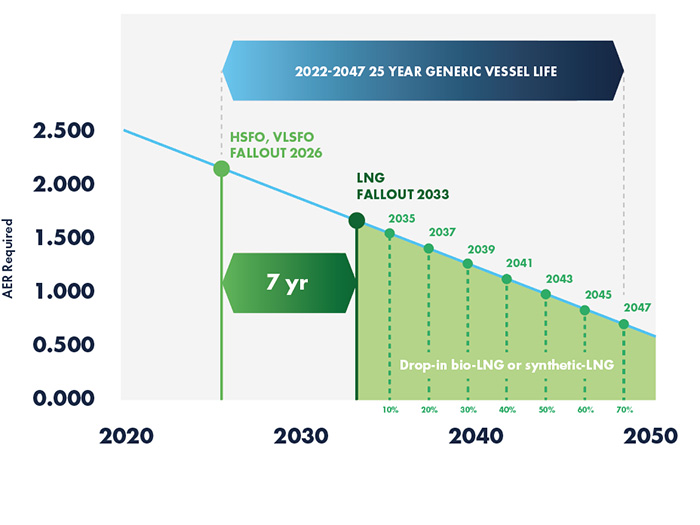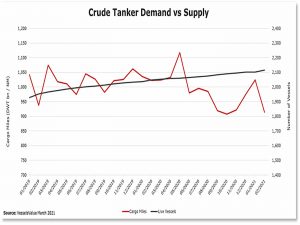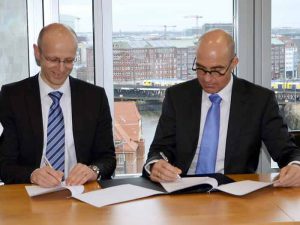
Dropping in bio-LNG extends green financing runway says SEA-LNG
Written by Nick Blenkey
Sourve: SEA-LNG
By dropping in bio-LNG to their fuel mix, owners of LNG-fueled ships could extend the time through which they are eligible for preferential “green” financing under the Poseidon Principles.
The SEA-LNG coalition says that a new analysis shows that for every 10% of bio-LNG dropped in and blended with LNG as a marine fuel, a vessel can achieve two extra years’ compliance with the Annual Efficiency Ratio (AER) curve used under the Poseidon Principles.
This extends the average seven-year additional competitive advantage for Poseidon Principle loans achieved using LNG alone.
The AER scoring measures progress on an ever-tightening decarbonizsation trajectory index to 2050 and is intended to align with and incentivize the IMO’s goals of reducing shipping’s total annual GHG emissions by at least 50% by 2050.
The latest SEA-LNG analysis is based on a capesize bulk vessel, considering the main engine only (no auxiliaries) to provide a conservative estimate. It compares LNG plus bio-LNG from a zero-carbon, sustainable source with conventional vessel fuels such as HFO, VLSFO and MGO.
SEA-LNG says that bio-LNG is fully compatible with existing LNG infrastructure and technologies and increasingly recognized as a sustainable fuel that can be “dropped in” and blended with LNG. Therefore, it represents one of the most viable pathways to decarbonization currently available to owners.
LNG fuel delivers greenhouse gas (GHG) reductions of up to 21% Well-to-Wake and up to 28% Tank-to-Wake. This means that LNG vessels perform well under Poseidon Principles’ funding criteria.
“As banks increasingly align with green finance principles, LNG offers benefits for emissions reduction and provides an ‘extended compliance runway’ for Poseidon Principle sustainability linked loans,” says John Hatley, SEA-LNG investment committee chairman. “An investor preserves more favourable financing terms compared to conventional marine fuels such as HSFO, VLSFO, and MGO.
“The use of bio-LNG as a drop-in fuel may extend this runway even further- an additional two years for every 10% dropped-in. This means lower ship emissions now and a compliance extension that yields long term competitive advantage.”
A recent CE Delft study concludes that bio-LNG is a scalable solution for the maritime sector. Estimated sustainable global supplies potentially exceed the future energy demand of the global shipping fleet. The study also showed that bio-LNG will likely be commercially competitive relative to other low- and zero-carbon fuels.
SEA-LNG says bio-LNG has a particular advantages when iproduced from domestic and agricultural waste by capturing methane that would otherwise be vented into the atmosphere.
The potential GHG reduction benefits from capturing and reusing the global economy’s waste streams are significant and need to be considered in any serious discussion of alternative fuels, says the coalition. Ensuring a level playing field for assessing alternative fuel options will require Well-to-Wake analysis being implemented by regulators including the IMO.
“As GHG emissions are cumulative, the decarbonization challenge only gets tougher the later we take steps to address it,” says Peter Keller, Chairman of SEA-LNG. “Waiting for options is not an option. The Industry must act now using LNG and bio-LNG that we know provide benefits today and into the future.”
“With the introduction of bio and synthetic variants, LNG not only provides a pathway to decarbonization in its own right, but also provides the physical infrastructure and asset base that can be used by other alternative fuels, when and if they become commercially viable.”



